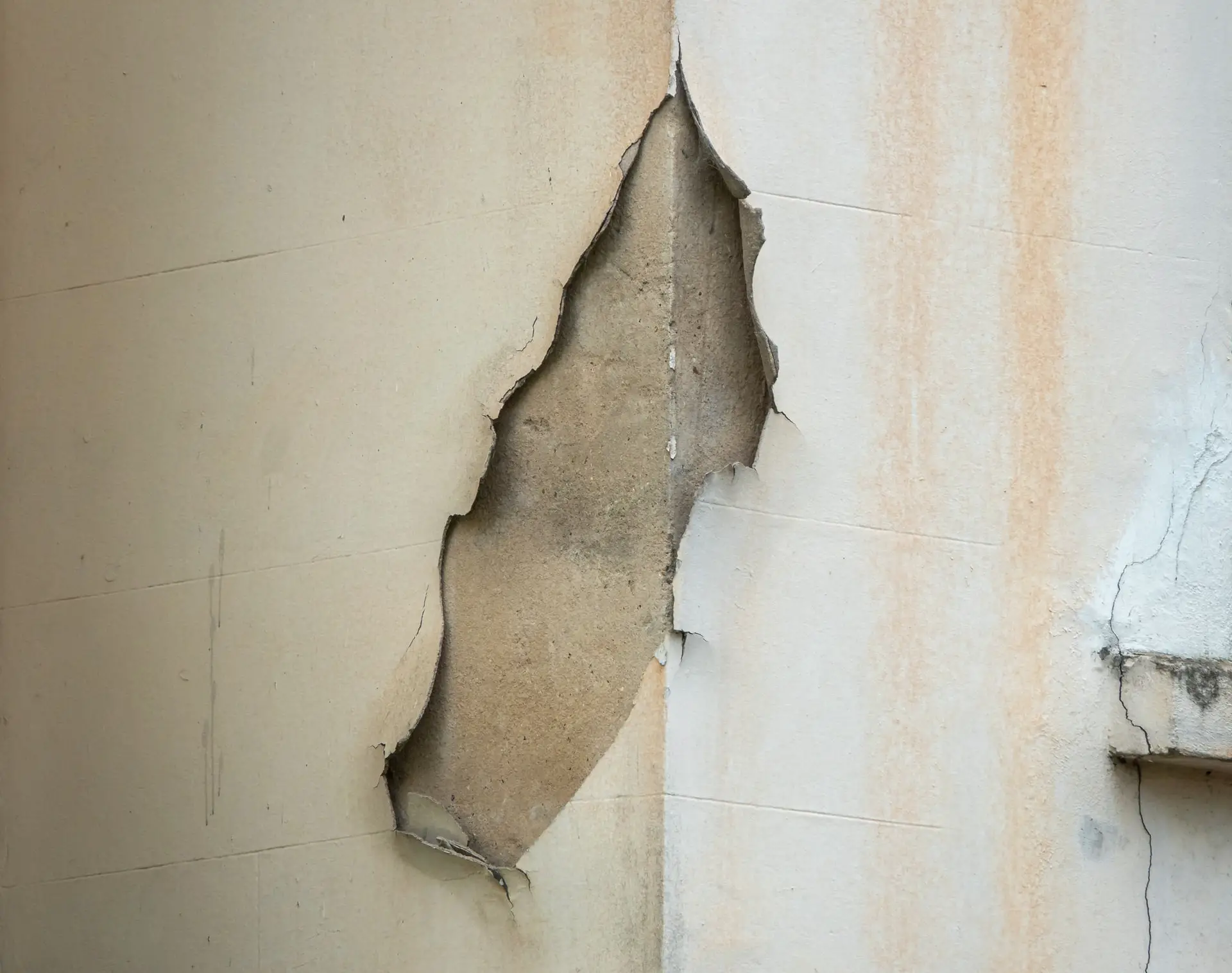I have heard many times about acrylic paint peeling in both artists and home improvement discussions. So I thought of putting out a well-detailed resource for you so that you can prevent acrylic paint from peeling or fix it if you have already faced acrylic paint peeling.
In general, acrylic paint or any other paint or coating peels when there is poor adhesion to the surface, and/ or moisture coming from inside or from behind the substrate. Poor adhesion is promoted by the type of surface, surface preparation, application, and environmental factors like moisture.
If you know the optimal conditions for acrylic painting, you will be able to avoid peeling in the future. Below I will explain in detail about surface, surface preparation, application, and other factors that cause acrylic paint peeling and how to avoid them.
What is acrylic paint peeling?
Acrylic paint peeling is paint coming off from the surface in layers due to poor adhesion to the surface. Many factors can influence acrylic paint peeling. This can happen in both artistic paintings as well as acrylic paint applied for home deco.
Another thing to note is that paint peeling is most common for all the paints whether it is water-based paint like acrylic or oil-based paint like enamel paints. The main factor behind paint peeling is poor adhesion to the surface.
So, in some points of this article, I will be discussing acrylic paint as well as other paints in general as most paint peeling factors are the same for all.
Can acrylic paint peel off or come off?
Although acrylic paint is a very durable and versatile paint medium, it can be peeled off or damaged if not properly used. As an example, acrylic paint peels off very easily if the painted surface is in contact with moisture for a long time when the paint layer is dry.
But if you used acrylic paint correctly, on a well-prepared surface with proper paint application methods while keeping the optimal environmental condition, acrylic paint is very durable and will not peel off easily, even if you painted in a high-traffic area.
Why does acrylic paint peel and how to fix it?
There are many reasons for acrylic paint peeling. I asked Dulux UK about the reasons for acrylic paint peeling and came up with the following awesome set of aspects to look for. They were sent to me by Laura Cooze, Senior Technical Advisor for Dulux paints.
The main thing you need to look at when acrylic paint peeling, is proper adherence to the surface, as I have mentioned before. Then you can think about the surface you are painting on, how you prepare the surface, how you apply paint and environmental factors that may cause acrylic paint to peel.
I have described each of these factors below in detail and how each of these factors contributes to acrylic paint peeling.
Surfaces and related factors causing acrylic paint peeling
Check the surface you’re painting on for the below aspects. Go through the details under each point to figure out why acrylic paint peeled and the possible solutions.
Design and the type of painting surface
Some surface designs do not help with paint adherence, thus the paint will start peeling. This is especially in the case of house paints. As an example, if you painted joinery with acrylic paints there is more chance for the paint to peel.
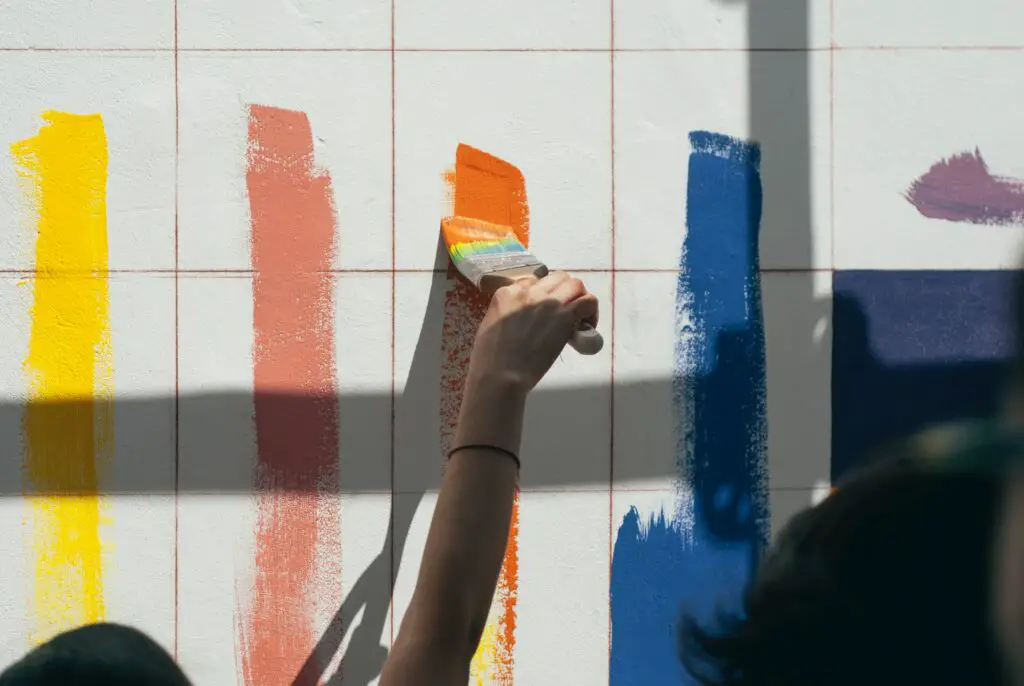
Sometimes surface itself makes it harder for acrylic paint to adhere, thus the paint will peel off. As you paint on a smooth, nonporous, rigid surface, usually the paint will peel off easily. Because these surfaces are smooth and rigid, paint has nothing to grab onto.
Some examples of these surfaces are metal, glass, and plastic. In order to stop paint peeling and provide better paint adhesion on these surfaces, it is important to provide ‘tooth’ by sanding or other means. Surface ‘tooth’ helps better paint adhesion and reduces paint peeling.
If you are an artist painting with acrylics, always choose a better canvas for painting, or you can prepare the canvas well by yourself. Preparing the painting surface is discussed in the below section. My suggestion for a good quality canvas is Fredrix canvases, you can check it out on Blick Art Material with the link.
The painting surface is damp with water
One of the most important things to consider is whether the painting surface is damp. A damp painting surface will not help with acrylic paint adhesion. If you are painting something like a wall that is porous and continuously holding water, then always paint when the wall is dry.
But if you are painting on a surface like a canvas with acrylic paint, a damp or moist canvas is not a problem. Because canvas will not hold moisture for a long time. Some acrylic artists use to mist the canvas from the opposite side of the canvas. It helps to keep the paint wet and control the drying time.
Some acrylic artists even claim that misting the opposite side of the canvas increased the acrylic paint adhesion to the surface. However, you need to do this after priming the canvas or on a pre-primed canvas. Make sure the gesso primer is fully dry before misting the backside of it.
However, most surfaces need to be fully dry before painting.
The surface allows moisture to pool and not drain away
Then you need to see if the paint has constant contact with water. It is most related to home improvement projects. As an example, you may have a wall painted with acrylic paint where moisture is pooling. This weakens the acrylic paint bond with the surface and may cause paint flaking, blistering, and peeling.
This is quite unusual to happen with acrylic paints on canvas as water generally does not pool on a canvas. But if you have a painting on the surface where moisture pools on without draining, it is most likely to peel the paint away.
Movement of the painting surface and open joints
In the first point of this section, I have mentioned how the design of the surface effect acrylic paint peeling. Open joints and moving painting surfaces like wood can cause stress to the acrylic paint film and may cause paint peeling.
If you have painted on a canvas that is unframed and you are rolling and unrolling it before the painting is fully dried, this could happen due to the stress on the paint film. Especially with the temperature changes in the environment. When the temperature is very low (cold) the paint film tends to break and may peel off.
Acrylic paint peeling by surface preparation
Paint peeling also depends on how you prepared the painting surface. Consider the below factors when preparing the surface for better paint adhesion and prevent acrylic paint peeling.
Lack of adhesion on a smooth or shiny surface
There are some surfaces that paint has a hard time adhering to, especially smooth, rigid, and no porous surfaces. Because of the nature of the surface, paint has almost nothing to grab onto the surface. Therefore we need to prepare these smooth shiny surfaces until they have ‘tooth’ the paint can hold onto.
Some examples of smooth rigid surfaces are glass, metal, and plastic. Usually, these surfaces are sanded to promote and texture surfaces. This way paint can grab onto the surface properly. After sanding apply a primer and then paint like acrylic.
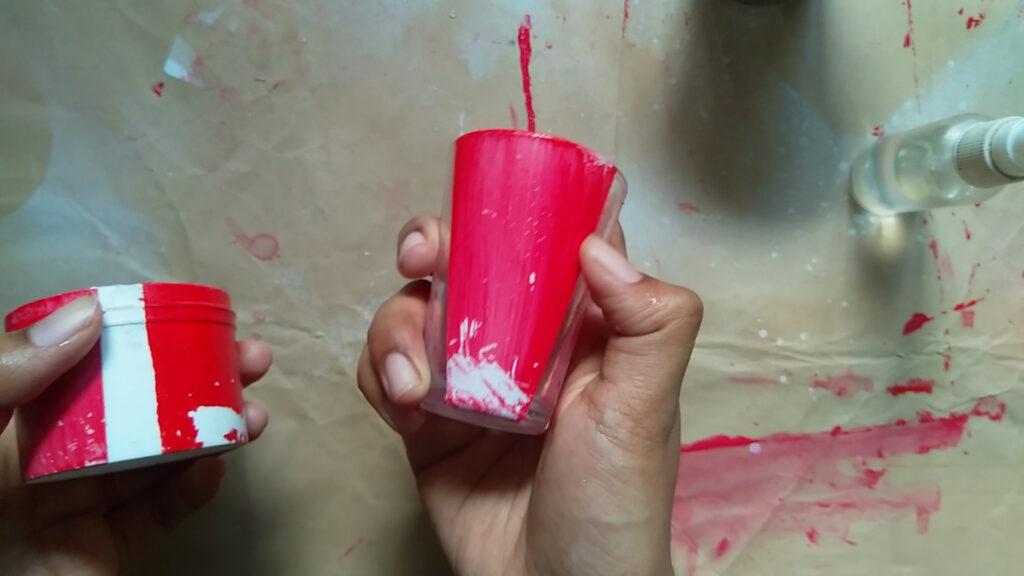
Also, it is important to note that acrylic paint when fully cured adhered really well even to the nonporous surfaces. If you did not prepare the surface in any way when painting on a smooth surface, the paint will come off or peel easily.
Even if you painted on a regular porous surface, you need to prepare it. As an example, if you are painting on a canvas apply gesso on it. Applying gesso is important even when the canvas is pre-gessoed.
Gesso’s purpose is to seal the cotton canvas so it does not soak up paint. If you are unable to purchase gesso then you can make your own with white paint, water, baking soda, or plaster Paris.
Resins and extrusions from knots and timber
This point is especially important if you are painting on wood. If you have painted on a bumpy wood or wood in general you need to look for a few things. There can be resins and extrusions coming off from the knots and wood. If you painted on top of these, the paint will not adhere fully to the wood and peel off with time.
Before painting wood, sand the surface, and then you need to seal the exposed surface of the knot in the wood. Otherwise, there is a risk of bleeding the resin into the paint film. This can cause discoloration of the paint but also poor adhesion of paint to the surface.
To seal the knots apply shellac knotting or you can drill out the knots and plug the drilled area with wood.
Preping the denatured timber surface
It is hard for paint to adhere to denatured wood. Denatured wood happens when the wood is exposed to the weather for a long time. Eventually, the wood will break down and the wood surface will become fibrous and furry.
Proper preparation is needed for a surface like this. You need to remove all the dead fibrous parts of the wood and treat the wood with a wood preservative. Treating the wood with linseed oil is also important before painting. Then you can repaint the surface as usual.
Efflorescence (Salts) foaming under the surface
Efflorescence (salts) comes from the sand that is used for construction. After moisture is evaporated from the surface Efflorescence is deposited on top of construction material like a white deposit. Before painting dry brush these without using any water or a sponge.
Do not paint directly on top of these deposits as the paint could peel off. This is important for construction work and not very much for artists.
Acrylic paint is the best choice to use after dry brushing, especially for a porous surface as acrylic paint allows the water to escape. Other than salt deposits make sure that you do not paint on the powdery or friable surfaces.
Painting over rust
Painting on rust could make your acrylic paints peel. Therefore it is important to remove any rust before painting. The removal method of rust will differ according to the degree of rust present on the surface.
You can manually scrape them from a surface, use abrasive papers and cloths to remove rust, and use solvents and chemicals like phosphate solutions and degreasing solvents. If the rusting and corrosion is advanced then you can use a method like sandblasting and flame cleaning.
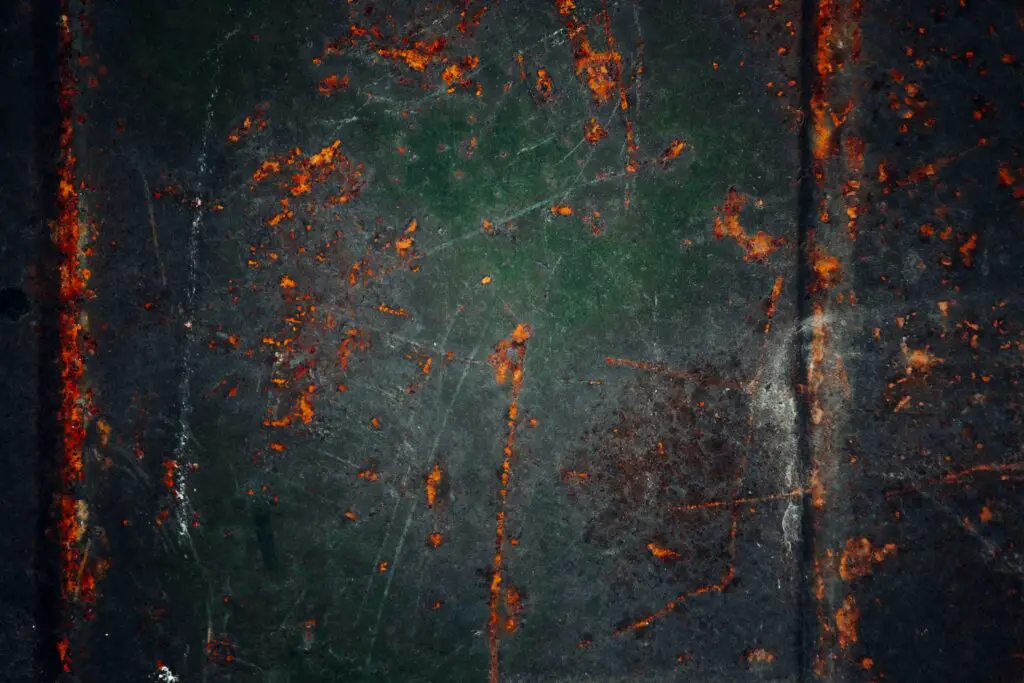
After preparing the metal surface you can apply a primer compatible with metal and with something like acrylic. Use a paint that is specifically made for metal surfaces for the best results.
Painting over dirt, grease, oil, polish, wax, etc.
When you are painting on a surface you should absolutely avoid dirt, grease, oil, polish, and wax. Because these reduce the ability of paint to form a strong bond with the surface. therefore make sure to clean any dirt, grease, oil, polish, or wax from a surface.
You can use a duster to remove dirt depending on the surface, dish soap to remove grease, oil, and acetone, or rubbing alcohol to remove polish and wax. Especially check the plastic surfaces for oil as it is a common place to find oil.
Also, avoid touching the painting surface with bare hands as skin oil and lotions will keep paint from adhering. Always clean your hands before painting. The place you store your painting surfaces is very important as canvases can accumulate oil, grease, and dirt during storage.
I have also written an article about what acrylic paint will not stick to. You will know what to avoid when it comes to sticking acrylic paint. Also how to stick acrylic paint on many other surfaces and keep it off.
Paint over poorly adhering to the previous coating
If you are painting on top of a previous paint layer, always consider the compatibility of the two paints. As an example, acrylic paint will not adhere to an oil-painted base. The paint film will break or peel off over time.
Follow the fat over lean rule in this case. oil paint is fat and acrylic paint is lean. So you can paint fat oil paint over lean acrylic paint but not vice versa.
Paint application methods causing acrylic paint peeling
After considering surface preparation now you can look into paint application. How you apply paint is important for better paint adhesion to the surface and to avoid paint peeling.
When painting we are applying different coating and paints to the surface. Fisowing is a list of coatings and paints commonly used when painting a surface.
- Primers or sealers: Makes the bond with surface and paint
- Undercoats: Create thickness for the paint layers
- Pigmented finishing or top coat: A durable and flexible coating with color
- Clear coatings: Allows seeing the natural foram of wood
- Stains: Color the wood
You will need to know these coatings as I mention those in the below sections.
Applying a coating or paint too thickly
If you applied any coating or paint too thickly, there is a tendency to peel that coating off. There is an optimal paint film thickness. It is 50 microns for the wet paint coat and 25 microns for a dry paint coat (Hughes, 2006, 7.1 Introduction section).
Thick paint or primer layers or primers will not fully adhere to the surface. Therefore there is a risk of peeling off these paint layers.
Incorrect primers used on a surface result in a lack of adhesion
Primer is the foundation for all the coatings you add up on the surface. Therefore you need to choose the primer carefully. A primer is also called a sealer. It bonds with the porous surfaces well. It acts as the bond between the paint and the surface.
You need to choose the correct primer for the surface because different surfaces are compatible with different primers. As an example use acrylic gesso primer for acrylic paints in artwork, an acrylic primer for plaster, zinc phosphate primer for metal, and a wood primer for wood.
Do not use oil gesso primer for canvases to be painted with acrylics. As a primer helps with the adhesion and prevents acrylic or any other paint from peeling off from an s surface.
When painting on wood, make sure to seal the surface with primer or sealer. Otherwise, the paint would peel off in layers. This is because wood is like a sponge that absorbs water. But we need to keep the paint without any contact of moisture from the wood after painting. A sealer applied before painting helps to seal the wood surface well.
Over spreading or thinning of a coating
Thinning out or over-spreading paint coats can weaken the bonds between the paint and the surface. Hence the paint can peel off. However, many people did not face paint peeling even after thinning acrylic paint with 80% to 90% water.
However, as a rule of thumb, acrylic paint is recommended to thin with no more than 30% water. But, you can thin acrylic paint with an artist medium as much as you want because the medium has binders that help with paint adhesion.
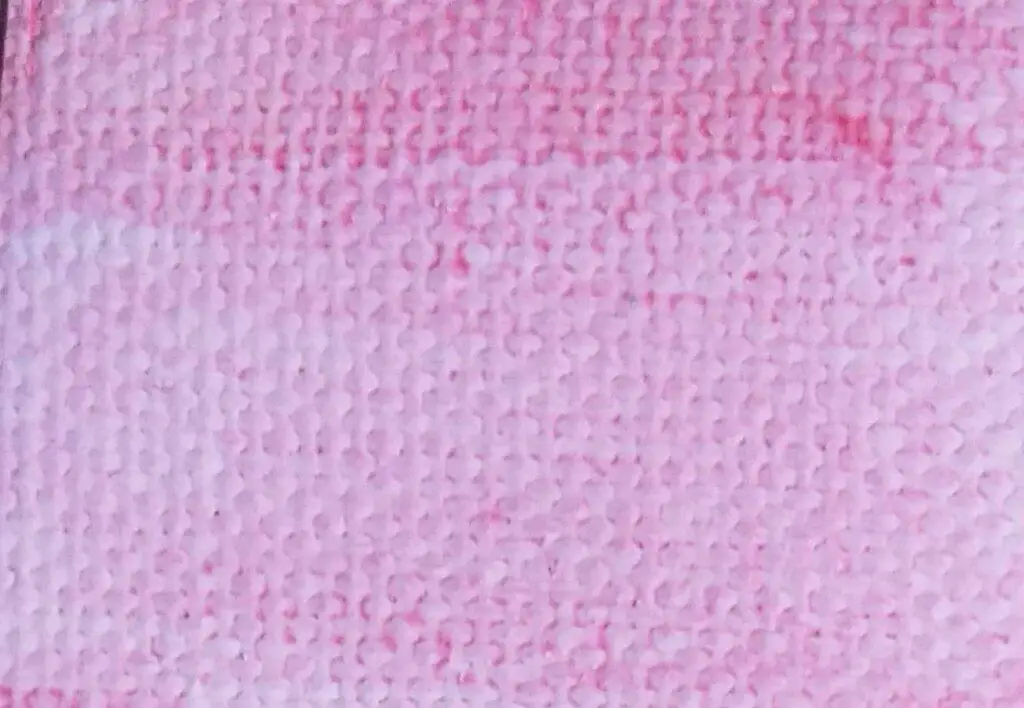
Another thing you need to consider when painting, is the thickness of the sealing coat. You need to thin the sealing coat adequately when painting fresh plaster/skim/plasterboard. Otherwise, the paint tends to peel off.
Overworking the paint
As obvious as it is overworking paint before drying can peel the acrylic paint off. When the paint is in the middle of the drying process, it has not formed a stable bond with the surface. So if you are overworked on top of this paint film, it can peel off.
I have written in detail about overworking acrylic paint in the article Why does acrylic paint lift? (Best solutions included).
Environmental factors causing acrylic paint peeling
Extreme temperatures retard the paint film formation. When paint film is not formed properly it has poor adhesion to the surface. Therefore avoid painting or drying in temperatures above 90 0F.
Also, you need to give adequate time for the paint to dry. For acrylic paint give at least 20 minutes before adding any more layers on top. If the previous layers start lifting off give more time for that layer to dry.
You also need to consider the humidity for the proper film formation. It is better to have around 50% relative humidity. I have written a whole article about acrylic paint curing. You will find more details about the optimal conditions for acrylic paint film formation.
Conclusion
Acrylic paint peeling is a common problem in both home decoration and art industries. Many factors go into acrylic paint peeling from the surface you are painting on to the environmental factors in the area. When you know the optimal conditions for painting, it is easier to avoid acrylic paint peeling and create something that is both durable and long-lasting.
References: Hughes, R. (2006) Painting and Decorating. 1st and. CRC Press. Available at: https://www.perlego.com/book/1623969/painting-and-decorating-pdf (Accessed: 1 July 2022).

